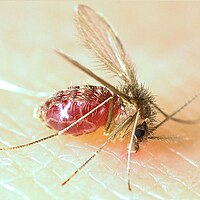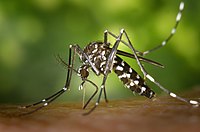
Molecular and Biochemical Detection of Insecticide Resistance in the Leishmania Vector, Phlebotomus papatasi (Diptera: Psychodidae) to Dichlorodiphenyltrichloroethane and Pyrethroids, in Central Iran
Sign Up to like & getrecommendations! Published in 2022 at "Journal of Medical Entomology"
DOI: 10.1093/jme/tjac031
Abstract: Abstract The aim of the present study was to explore resistance markers and possible biochemical resistance mechanisms in the Phlebotomine sand fly Phlebotomus papatasi in Esfahan Province, central Iran. Homogenous resistant strains of sand flies… read more here.
Keywords: papatasi; phlebotomus papatasi; central iran; resistance ... See more keywords

Control of zoonotic cutaneous leishmaniasis vector, Phlebotomus papatasi, using attractive toxic sugar baits (ATSB)
Sign Up to like & getrecommendations! Published in 2017 at "PLoS ONE"
DOI: 10.1371/journal.pone.0173558
Abstract: Introduction Attractive Toxic Sugar Baits (ATSB) is a new vector control method that meets Integrated Vector Management (IVM) goals. In an experimental design, this study aimed to determine effects of ATSB on control of Phlebotomus… read more here.
Keywords: vector; leishmaniasis; control; attractive toxic ... See more keywords

Studies of host preferences of wild-caught Phlebotomus orientalis and Ph. papatasi vectors of leishmaniasis in Sudan
Sign Up to like & getrecommendations! Published in 2020 at "PLoS ONE"
DOI: 10.1371/journal.pone.0236253
Abstract: Introduction Understanding the feeding behavior and host choice of sand flies provides valuable information on vector-host relationships and elucidates the epidemiological patterns of leishmaniasis transmission. Blood meal analysis studies are essential for estimating the efficiency… read more here.
Keywords: host preferences; sand flies; blood meal; papatasi ... See more keywords

Isolation in Natural Host Cell Lines of Wolbachia Strains wPip from the Mosquito Culex pipiens and wPap from the Sand Fly Phlebotomus papatasi
Sign Up to like & getrecommendations! Published in 2021 at "Insects"
DOI: 10.3390/insects12100871
Abstract: Simple Summary Diverse strains of Wolbachia bacteria, carried by many arthropods, as well as some nematodes, interact in many different ways with their hosts. These include male killing, reproductive incompatibility, nutritional supplementation and suppression or… read more here.
Keywords: sand fly; cell lines; wolbachia strains; papatasi ... See more keywords